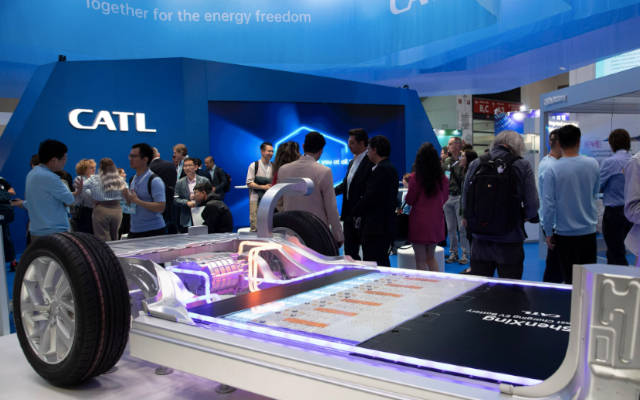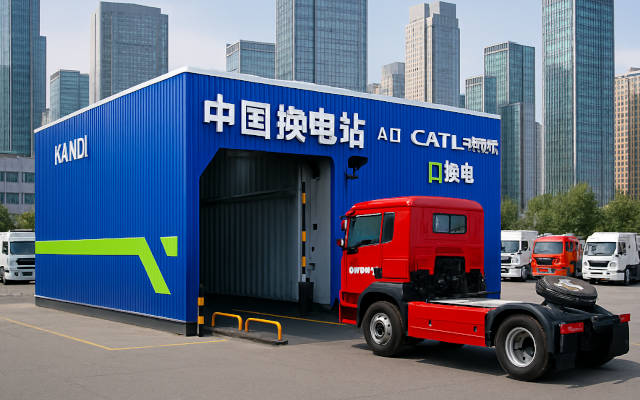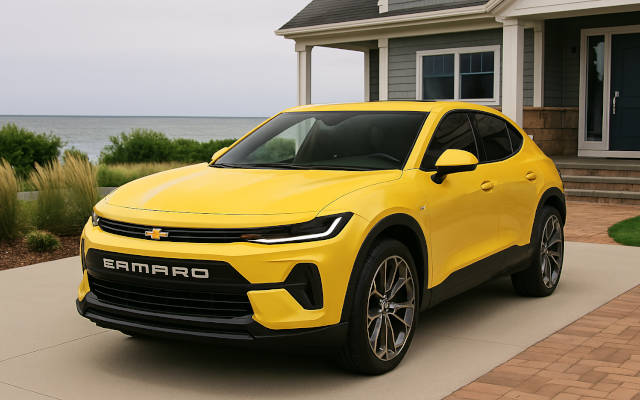 EDITOR'S PICK
EDITOR'S PICK
GM Bets on CATL LFP Batteries for New Bolt EV: What It Means for Safety and Cost
13 Aug 2025 | Synopsis
 GM will use CATL's LFP batteries for the 2027 Chevy Bolt to cut costs and improve safety, meeting China’s GB 38031-2025 standard. LG will begin domestic LFP production in Michigan by 2027. Trump-era tariffs on Chinese batteries - up to 80% - will raise short-term costs, but GM sees temporary imports as viable. The Bolt will offer 300+ miles of range and Tesla-style charging.
GM will use CATL's LFP batteries for the 2027 Chevy Bolt to cut costs and improve safety, meeting China’s GB 38031-2025 standard. LG will begin domestic LFP production in Michigan by 2027. Trump-era tariffs on Chinese batteries - up to 80% - will raise short-term costs, but GM sees temporary imports as viable. The Bolt will offer 300+ miles of range and Tesla-style charging.Most EV-friendly Premier League Football Stadiums In The UK
12 Aug 2025 | Synopsis
 The surge in EV chargers near Premier League stadiums marks a win for UK drivers, showing that charging is expanding beyond motorways into busy urban hubs. Football matchdays draw huge crowds, making accessible chargers crucial for reducing range anxiety. This growth signals broader public charging integration into everyday destinations, supporting the UK's EV adoption goals and making matchday travel cleaner.
The surge in EV chargers near Premier League stadiums marks a win for UK drivers, showing that charging is expanding beyond motorways into busy urban hubs. Football matchdays draw huge crowds, making accessible chargers crucial for reducing range anxiety. This growth signals broader public charging integration into everyday destinations, supporting the UK's EV adoption goals and making matchday travel cleaner.Kandi Technologies Emerges as Key Player in China's Battery Swap Revolution
12 Aug 2025 | Synopsis
 Kandi Technologies - a once modest budget EV maker - is now a central player in China's battery swap infrastructure. Its subsidiary, China Battery Exchange, will supply key components (station structures, robotic arms, thermal modules) for CATL's ambitious plan to deploy over 10,000 swap stations nationwide. With 90-second swaps, both single-use and subscription pricing, Kandi is targeting fleet operators while drawing investor attention.
Kandi Technologies - a once modest budget EV maker - is now a central player in China's battery swap infrastructure. Its subsidiary, China Battery Exchange, will supply key components (station structures, robotic arms, thermal modules) for CATL's ambitious plan to deploy over 10,000 swap stations nationwide. With 90-second swaps, both single-use and subscription pricing, Kandi is targeting fleet operators while drawing investor attention.Ford Throws Out Henry Ford's Assembly Line To Make Low-Cost EVs In America
12 Aug 2025 | Synopsis
 Ford is scrapping its century-old straight-line assembly line for a three-branch "assembly tree" setup, enabling parallel construction of EV modules. Investing almost $5 billion, Ford will retool its Louisville plant, aiming to produce a mid-size electric pickup starting at $30,000 in 2027. Powered by cost-effective domestic LFP batteries, the overhaul is designed to cut assembly complexity, speed up production, and bolster U.S. competitiveness.
Ford is scrapping its century-old straight-line assembly line for a three-branch "assembly tree" setup, enabling parallel construction of EV modules. Investing almost $5 billion, Ford will retool its Louisville plant, aiming to produce a mid-size electric pickup starting at $30,000 in 2027. Powered by cost-effective domestic LFP batteries, the overhaul is designed to cut assembly complexity, speed up production, and bolster U.S. competitiveness.Return of the Chevy Camaro, But This Time It's An Electric SUV
12 Aug 2025 | Synopsis
 The Camaro is set to return as an electric fastback SUV - not a coupe - slated for fall 2026. Expected variants range from single-motor, rear-drive models (241–365 hp) to dual-motor AWD (300 hp) and high-performance SS (615 hp) trims, with a possible 1,000-hp ZL1 using Hummer EV tech. Battery options likely include 85 kWh and 102 kWh packs, with charging up to 190 kW. Prices are estimated between $36,000 and $65,500.
The Camaro is set to return as an electric fastback SUV - not a coupe - slated for fall 2026. Expected variants range from single-motor, rear-drive models (241–365 hp) to dual-motor AWD (300 hp) and high-performance SS (615 hp) trims, with a possible 1,000-hp ZL1 using Hummer EV tech. Battery options likely include 85 kWh and 102 kWh packs, with charging up to 190 kW. Prices are estimated between $36,000 and $65,500.
 Si Exclusive
Si Exclusive
Hydrogen's Flight Path: Fuel Cells, Turbines, and the Economics of Clean Aviation
10 Oct 2025 |  Aviation is shifting from Jet A to four fuel systems: electricity, hydrogen (fuel cell and combustion), SAF, and petroleum. Fuel cells suit short-haul aircraft; hydrogen combustion may power long-range jets. SAF bridges legacy fleets. Hydrogen costs - $5-$7/kg today, possibly $2/kg by 2040 - impact ticket prices and infrastructure decisions. Airport authorities, airlines, and governments will share deployment costs. Each fuel has distinct environmental pros and cons shaping aviation's net-zero future.
Aviation is shifting from Jet A to four fuel systems: electricity, hydrogen (fuel cell and combustion), SAF, and petroleum. Fuel cells suit short-haul aircraft; hydrogen combustion may power long-range jets. SAF bridges legacy fleets. Hydrogen costs - $5-$7/kg today, possibly $2/kg by 2040 - impact ticket prices and infrastructure decisions. Airport authorities, airlines, and governments will share deployment costs. Each fuel has distinct environmental pros and cons shaping aviation's net-zero future.
 11 Oct 2025 00:17:39 UTC |
RECENT PODCASTS
BYD Soars - Cheaper Tesla Models - The Bolt is Back - Rivian
SEARCH RSSTREAM
 53 New Postings In Past 24 Hours
53 New Postings In Past 24 Hours
Category:finance
Region:NoAmerica
Date:10 Oct 2025
Category:policy
Region:NoAmerica
Date:10 Oct 2025
Category:mobility
Region:AsiaPacific
Date:10 Oct 2025
Category:mobility
Region:AsiaPacific
Date:10 Oct 2025
Category:finance
Region:NoAmerica
Date:10 Oct 2025
Category:finance
Region:IndoAsia
Date:10 Oct 2025
Category:energy
Region:Global
Date:10 Oct 2025
Category:energy
Region:NoAmerica
Date:10 Oct 2025
Category:finance
Region:NoAmerica
Date:10 Oct 2025
Category:finance
Region:Global
Date:10 Oct 2025